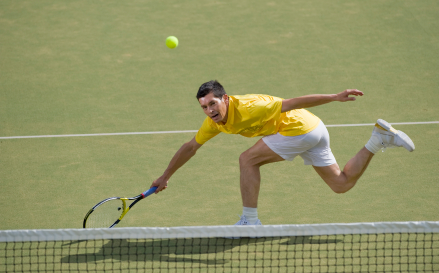If you were to think about what regions of the body that are most likely to get injured in sports, the abdominal muscles would probably not be the first one that comes to mind. Injuries to the knees, ankles, shoulders, and elbows are indeed far more common and typically worthy of the attention they receive, but they are certainly not the only areas where injuries occur. Strains of the abdominal oblique muscles—or side strains—may not be all that well known, but they are actually quite common in sports, particularly those that involve rotational movements. To give you a better sense of who’s at risk and how we can help, our New York City physical therapists dive into the mechanism of these strains in the athletic population.
Your body’s core is made up of lower back, abdominal, pelvic and hip muscles, which together provide balance and trunk stability that allows for certain movements of the limbs to occur, such as throwing and swinging. The oblique muscles are found on the side of the rectus abdominis, which is the six-pack muscle that most people associate with the abs. There is an external oblique that lies on top and an internal oblique that lies underneath both sides of the rectus abdominis, and these muscles play a significant role in flexing and rotating the trunk, as well as stabilizing it during complex sports movements.
Most abdominal injuries occur in either the external or internal oblique muscles through a number of possible ways. Having poor mobility of the hips or mid-spine can put excessive strain on the trunk during swinging and throwing movements, which can result in compensation by other muscles. An imbalance between the right and left oblique muscles is also common in sports like golf and baseball, which can put additional stress on the lead side oblique muscles. This is why athletes involved in sports that involve rotational movements like throwing a ball or swinging a bat, club, or racquet are at a particularly high risk for experiencing an oblique abdominal strain.
The internal oblique is more likely to strain than the external oblique, and after the injury, patients typically experience a sharp, sudden pain in or around the rib cage. The abdominal muscles are also tender and a bruise may develop. Twisting and bending motions are usually painful, which can make it difficult to perform basic everyday tasks.
Treatment and prevention from our New York City physical therapists
After an oblique abdominal strain, athletes should stop participating in their sport to avoid further damage and seek out further assistance from a physical therapist. Here at DSPT, our New York City physical therapists can provide you with an exercise program to alleviate symptoms and reduce the chances of further injury. Most programs will include the following:
- Cold therapy
- Heat therapy
- Compression
- Strengthening exercises
- Stretching exercises
- Advice on what exercises and sports to stay away from
- Guidance on how to modify your form to prevent future injuries
Even though oblique abdominal strains may not get the same attention as some of the more common sports-related injury, they can still be just as bothersome and frustrating for patients. If you’re an athlete in a rotational sport dealing with symptoms that may suggest an oblique strain, our New York City physical therapists would like to help you. Contact Dynamic Sports Physical Therapy at 212-317-8303 to schedule an appointment today, or click here for more information on oblique abdominal strains.

